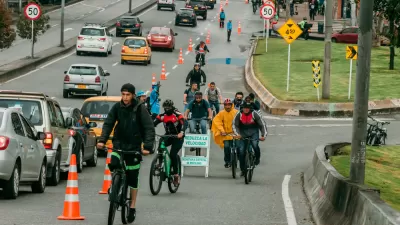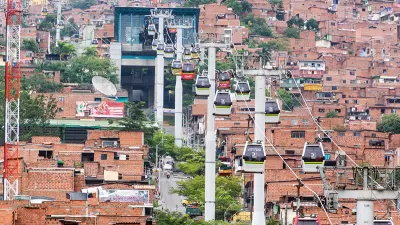Michael Kimmelman reports on the strong ties that exist between the economic and social well-being of a city and its architecture, infrastructure and public spaces, as evinced in Bogotá, Colombia.
Designers, architects and city planners have the ever open-ended task of creating working environments that serve their populations. But if not carefully evaluated and looked after, civil infrastructure, which acts as the skeleton of a city, can become a hindrance. As is the case in the city of Bogotá, whose own infrastructure has seen its ups and downs as proper maintenance waned and promises for expanded transit routes were left unfulfilled. As a result, residents were left with pieces of a city and no sustaining leadership in which to pull it all together.
So what happened in Bogotá, the city celebrated for the transformations led by two pioneering mayors - Antanas Mockus and Enrique Peñalosa - and now finds optimism at its lowest point in 15 years?
"The worst thing for a Latin man is to find himself raising another man's child," stated Mockus, the former mayor and university professor. As Kimmelman explains, this statement describes the, "refusal by many Colombian politicians to adopt plans their predecessors conceived, instead preferring to invent their own."
The built environment, Kimmelman writes, has an incredible ability to instill and restore a city's sense of optimism and civic self-esteem. Bogota hosts a wealth of builders who hold this belief, and buildings like the El Tintal Public Library and the Jardín el Porvenir kindergarten have imbued a feeling of positive well-being in the community despite the city's recent steps backward.
Urban planner Lorenzo Castro speaks of the need for hope in Bogotá and the healing power of such buildings as the El Tintal Public Library: "People in the neighborhood live in a room with five people in a small house with three other families, but they go there and see the space, the construction, the comfort and safety. And suddenly, maybe for the first time, they feel included in society, in the city. They can dream."
FULL STORY: Past Its Golden Moment, Bogotá Clings to Hope

Alabama: Trump Terminates Settlements for Black Communities Harmed By Raw Sewage
Trump deemed the landmark civil rights agreement “illegal DEI and environmental justice policy.”

Planetizen Federal Action Tracker
A weekly monitor of how Trump’s orders and actions are impacting planners and planning in America.

Why Should We Subsidize Public Transportation?
Many public transit agencies face financial stress due to rising costs, declining fare revenue, and declining subsidies. Transit advocates must provide a strong business case for increasing public transit funding.

Judge Orders Release of Frozen IRA, IIJA Funding
The decision is a victory for environmental groups who charged that freezing funds for critical infrastructure and disaster response programs caused “real and irreparable harm” to communities.

‘Clybourne Park’ Sets Stage for Housing Equity Discussions
Clybourne Park, a play exploring race, real estate, and community tensions, can set the stage for discussion on the lasting impacts of housing discrimination, gentrification, and the fight for affordability.

Understanding Road Diets
An explainer from Momentum highlights the advantages of reducing vehicle lanes in favor of more bike, transit, and pedestrian infrastructure.
Urban Design for Planners 1: Software Tools
This six-course series explores essential urban design concepts using open source software and equips planners with the tools they need to participate fully in the urban design process.
Planning for Universal Design
Learn the tools for implementing Universal Design in planning regulations.
Caltrans
Smith Gee Studio
Institute for Housing and Urban Development Studies (IHS)
City of Grandview
Harvard GSD Executive Education
Toledo-Lucas County Plan Commissions
Salt Lake City
NYU Wagner Graduate School of Public Service




























